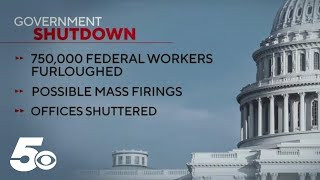The federal government shutdown, now in its second day as of October 2, 2025, shows no signs of lifting anytime soon. It kicked off at midnight on October 1 after Congress failed to pass a funding bill, leaving Republicans and Democrats locked in a bitter standoff over the 2025 budget. President Trump has pointed fingers at Democrats for blocking what he calls essential cuts, while Democrats accuse the administration of holding the economy hostage over partisan demands. Indeed, the impasse echoes past shutdowns, but this one feels particularly entrenched, with no scheduled talks on the horizon.
At the center of the fray is Russ Vought, the White House budget director, who's been pushing aggressively for reductions in spending that Democrats view as slashes to vital programs. Vought's role in crafting the Republican funding proposal has drawn sharp criticism, as it ties government operations to broader policy fights. Why did this happen? Simply put, lawmakers couldn't bridge the gap between a clean funding extension and one loaded with riders on issues like health care subsidies. Moreover, the shutdown's roots lie in deeper divisions, reminiscent of the 35-day closure in 2018-2019 over border wall funding—a record that this crisis might soon challenge.
What exactly is a furlough in this context? It's essentially a forced unpaid vacation for non-essential federal workers, affecting hundreds of thousands who must stay home without paychecks until the lights come back on. Yet, Social Security checks will keep flowing, thanks to prior funding, providing some relief to millions of retirees. Still, the ripple effects are widespread: national parks closed, air travel delayed, and research halted. In Cincinnati, for instance, local federal offices like the IRS and VA facilities are scaling back, leaving residents to navigate longer waits for services amid the uncertainty.
Historical shutdowns, numbering over 20 since 1976, have typically lasted days or weeks, but this one's threats of mass layoffs—outlined in White House memos—add a darker edge. Federal employees face not just furloughs but potential permanent job cuts if the impasse drags. However, with both sides dug in, predictions on reopening are murky at best.
As the economic toll mounts, one can't help but wonder how long Americans will tolerate this recurring dysfunction before demanding real change.

